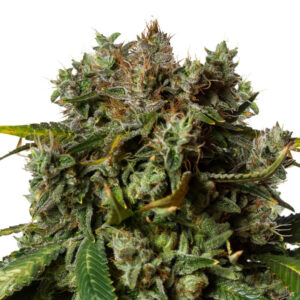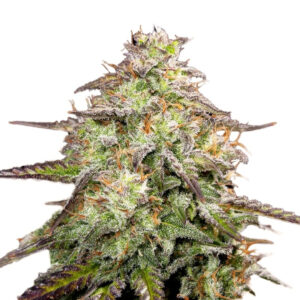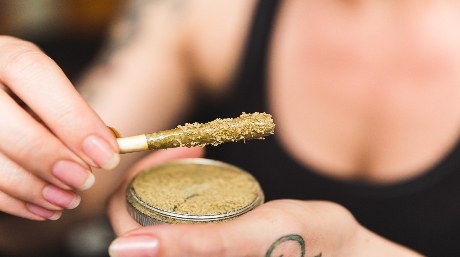 By:
Gaston
By:
Gaston
Let’s face it: tobacco gets a bad rap—and for good reason. While many cannabis smokers enjoy the ritual of rolling a spliff, the presence of nicotine and other harmful substances in tobacco raises serious health concerns. Fortunately, there are plenty of tobacco alternatives for joints that can give you the same satisfying experience—without the added risks.
Spliffs—joints rolled with a mix of weed and tobacco—are especially popular in Europe and among those who appreciate the balanced buzz. But when you consider the long-term side effects of smoking tobacco, it’s easy to see why more people are turning to natural tobacco alternatives for joints.
By switching to cleaner, plant-based fillers, you can enjoy your favorite strains without worrying about issues like lung damage or cardiovascular disease. Many of these substitutes even add flavor, aroma, or calming effects to your smoke.
Ready to make the switch? Here are the 10 best tobacco replacements for rolling marijuana joints:

Greengo contains four primary ingredients:
Unlike traditional herbal tobacco, Greengo contains no nicotine and produces significantly less tar. It’s one of the most popular tobacco alternatives for joints because it delivers a smooth experience without the addictive risks.
Sage (Salvia officinalis) has long been recognized for its medicinal properties. It’s commonly used to treat digestive issues and promote respiratory health.
When added to cannabis joints, Sage—especially White Sage—adds a soothing herbal aroma and subtle therapeutic effects, making it a well-rounded tobacco substitute.
Damiana is a native plant of Mexico, Southern Texas, and parts of Central and South America. It’s widely known for its aphrodisiac effects and mood-enhancing properties.
Traditionally used by the Aztecs to support fertility and libido, Damiana produces mild psychotropic effects that pair well with THC-rich cannabis. If you’re aiming for a relaxed, couch-locked session, this is one of the best natural tobacco alternatives for joints.
Kanna (Sceletium tortuosum), also known as Channa, has been used in South Africa since prehistoric times. Traditionally snuffed or smoked by pastoralists, it’s prized for its mood-enhancing effects, anxiety relief, and calming properties.
At higher doses, Kanna may produce a sedative effect—making it a unique option among tobacco alternatives for joints if you’re seeking a more relaxing high. However, some users report temporary spikes in blood pressure, so it’s wise to do your research before including it in your smoke blends.
Hops (Humulus lupulus), best known as a flavoring agent in beer, are actually relatives of the cannabis plant. These cone-shaped flowers make excellent tobacco alternatives for joints due to their rich terpene profile, especially the sedative myrcene.
When paired with cannabis, hops can boost flavor and enhance the relaxing effects of your joint. To preserve its therapeutic benefits and avoid side effects linked to high temperatures, it’s best to smoke or vape your cannabis blend at lower heat levels.
Also called catmint, catnip is widely loved by felines—but it’s not just for cats. Humans can use it too, especially as one of the more relaxing tobacco alternatives for joints. Its leaves have a pleasant minty aroma and provide calming, anti-anxiety effects when smoked. While the impact on humans isn’t as intense as on cats, it still offers a smooth and mild experience when paired with cannabis.
Rosemary is an herb packed with antioxidants and memory-enhancing compounds. It grows well in many regions and is often used in herbal blends for its anti-inflammatory and immune-boosting properties. As a tobacco alternative for joints, rosemary adds a piney flavor and may subtly improve cognitive clarity. Rolling marijuana with rosemary offers a unique aromatic profile and gentle, uplifting effects.
Lavender is globally appreciated for its calming scent and beautiful purple blooms. It contains the terpene linalool, which is known for its soothing and anti-anxiety properties. When used in tobacco alternatives for joints, lavender enhances the entourage effect—working with cannabinoids to increase relaxation and stress relief.
According to Healthline’s guide to cannabis terpenes, linalool can help reduce anxiety and improve mood, making lavender an excellent herbal option for those looking to enhance the flavor and effects of their cannabis without the risks of tobacco.

Kratom, also known by its scientific name Mitragyna speciosa, is a powerful herbal option that comes from Southeast Asia and belongs to the coffee family. While it’s often used to manage chronic pain and ease opioid withdrawal symptoms, it’s also gaining attention as one of the more potent tobacco alternatives for joints.
Its effects vary depending on dosage. Small doses (under 5g) tend to produce stimulating effects, while moderate amounts (up to 15g) may cause sedation and mental clarity. That said, Kratom is a strong herb and should be used carefully, especially when combining it with cannabis in joints. Some users report side effects, so it’s important to start low and go slow.
Skullcap is a flowering plant known for its beautiful appearance and calming properties. Often described as having a smooth, neutral smoke, Skullcap is an ideal partner for cannabis—especially when you’re looking for tobacco alternatives for joints that won’t overpower your bud’s flavor or effects.
It pairs particularly well with Indica strains, enhancing their relaxing properties without adding any harshness to the smoke. For those seeking a mild herbal option that complements cannabis rather than competes with it, Skullcap is a great choice.
Now, there is another, more economical alternative with demonstrable benefits compared to cigarette consumption, and that is hash. This cannabis resin, known for its THC concentration—the plant’s main psychoactive compound—has sparked debates about its potential benefits and risks as a smoking option. In fact, many cannabis enthusiasts consider hash among the top tobacco alternatives for joints due to its purity and potency.
Hash, also called “chocolate” or simply “hashish,” has a long-standing tradition in several cultures. Its production involves extracting and concentrating cannabis resins into blocks, powder, or paste. Historically, hash has been used in religious ceremonies, spiritual rituals, and recreational practices across regions like North Africa, the Middle East, and South Asia.
Today, hash is also gaining recognition as one of the most traditional tobacco alternatives for joints, especially among users seeking a cleaner, more potent smoking experience without the harmful effects of nicotine or additives commonly found in commercial tobacco products.
Advocates of responsible cannabis use argue that hash provides a more intense and controlled smoking experience. Its concentrated THC levels may help relieve chronic pain, lower stress, or promote restful sleep. Some users also regard it as a healthier option compared to tobacco, positioning hash as one of the most traditional tobacco alternatives for joints—free from the carcinogenic chemicals found in conventional cigarettes.
However, hash consumption is not without its drawbacks. Its high THC concentration may increase the risk of anxiety, paranoia, or cognitive issues over time. While research on its addictive potential remains inconclusive, concerns about dependence persist within certain medical communities.
Despite its popularity, hash remains illegal in many regions due to broader cannabis prohibitions. The legal landscape is complex and varies not only from country to country but also between states or provinces. As some places move toward cannabis reform, the inclusion of hash in public health discussions highlights the need to evaluate smoking alternatives like hash from ethical, medical, and legal standpoints.
As cannabis continues to gain recognition both medicinally and recreationally, hash emerges as a culturally significant and potent choice among tobacco alternatives for joints. Still, it’s crucial to approach its use with awareness of both its benefits and its risks.
Explore and clear all your concerns on our Amsterdam Marijuana Seeds website. Discover our full cannabis selection and find helpful information to support your smoking decisions.













Related Posts

Ghost Train XTRM ® feminized strain, the extreme THC powerhouse, a must for veteran connoisseurs.

Explore the profound spiritual and medicinal aspects of Rapé, an Amazonian tobacco blend. Used in shamanic traditions for centuries, it’s revered for its ability to purify the pineal gland, enhance spiritual connection, and pass ancestral wisdom. Understand its role in rituals, therapy, and personal introspection.

Kief, often referred to as cannabis crystals, consists of weed trichomes separated from cannabis flowers using a fine mesh sieve.